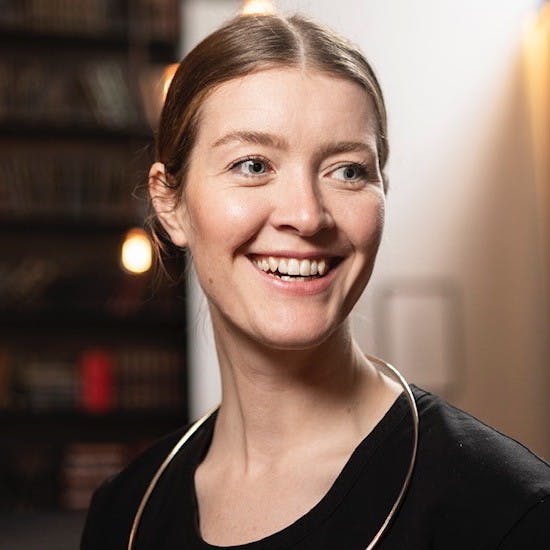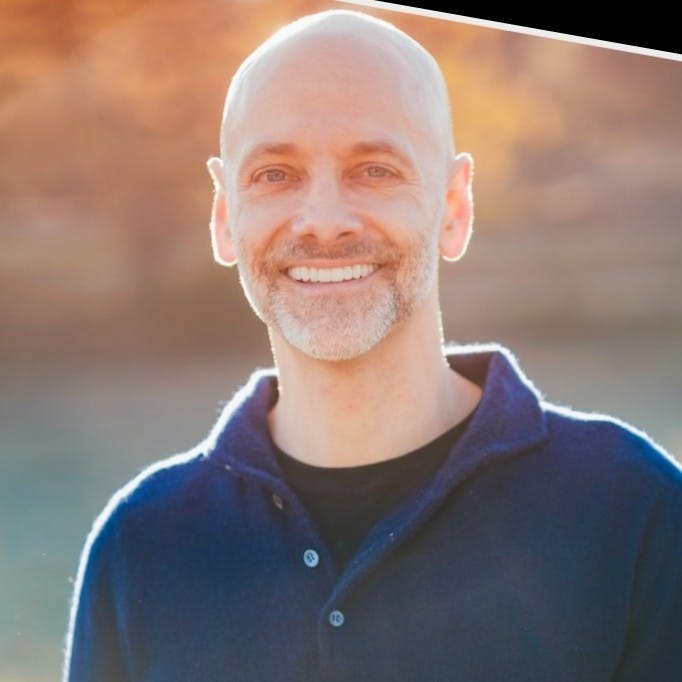Season 7 - Episode 6
Recognizing When Change Needs to be Made by Climb CEO
In today’s episode of the Product Podcast, Angela Ceresnie, CEO at Climb Credit shared her experience with transitioning from the big financial market into a niche market dedicated to making credit accessible to everyone. She opened up about her leadership style, company values and the structures around managing successful product teams in the Fin Tech industry.

“Let’s start from the beginning. How did you land at Climb Credit as CEO?”
My journey starts with about eight years working in traditional financial services. So I worked at American express and Citibank for about eight years and my role there was all credit underwriting. So I was responsible for building the algorithms and developing the policies on who we would approve and deny for credit. I worked both on the consumer side of the business and small business. And what I saw when I worked in the traditional financial ecosystem and in traditional credit markets, is that the big banks are set up to really help people who already have an income and already have great credit. But when people have limited credit or maybe not great credit, or when people have not great income or no income, typically the products that are available to them are limited. So in 2012, I quit working at the big banks and have been on my journey now to make the credit markets and credit products more accessible to all people. And that’s the work that we’re doing at climb.
“Take me back to that moment when you’re like, okay, I want to quit and really jump off the cliff to figure out how to open this parachute.”
I was working at Citibank and I had a great job with a great boss, worked with really amazing coworkers, but I had just had my first daughter, and I came back from maternity leave. I feel like having children for me, put working on sort of like a new bar, right? Like there was a new hurdle because now not only was it what I did all day, but it was also what kept me away from my children or at the time my one child, I have two now. I would say like, the decision to leave was, was really that if I’m going to spend my time away from my kids, every day working, I want to be working towards something where I feel like I can make a real impact and I’m really excited about it. And so I decided that, some of the stability and coziness of working at a big bank was less important, what was more important was sort of the mission of what I was doing and the outcomes on the other side.
So I started a company called Orchard back in 2012 with a few other co-founders, and we scaled that company and then eventually sold it to Cabbage. And then I joined climb initially as the COO. And the reason I joined Climb was because I was excited about the mission of the business and the ability to help students who want to attend schools like product school, be able to actualize their dreams through efficient, and affordable payment and financing options. I was the COO for about a year and a half, and then in may of 2018, me and the former CEO made the mutual decision that, um, he would move on and do other things. Since then he has been a really wonderful advisor to me, and I would move into the CEO role. So I’ve been at the CEO job now for a little over three years and loving every day of it.
“Let’s talk about the CEO job description that goes personally. What does your day-to-day look like?”
My day to day certainly has changed a lot. A lot of it depends on whether we’re actively fundraising or whether it’s conference season or whatever it is. So one of the fun things about being a CEO is that your job is always evolving both with the needs of the company, but also the needs of the market.
Right now I would say my time is focused in a few different areas. So one, is investor relations. So making sure that I’m engaging with both our board, the people who have invested in our business and the market, other potential investors on both the equity side of the business. So people who would write us checks for our operations to own part of the company and then also on the debt side. So we raise money to then be able to make loans to students who are attending the schools we work with. So that’s a big part of my job. And then the rest is all around making sure the culture is operating well, and people understand the strategy of the business. Then every once in a while, it’s solving those big meaty, challenging problems that sort of roll uphill to the CEO.
“What is the status of Climb and what makes you so unique from any other loan providers out there?”
So we partner with great schools like Product School, to help them to enroll more students affordably and efficiently. So we have a number of different products that we offer to schools to then offer their students as they enroll.
Our most important product is a loan product, which essentially is, from a consumer perspective. It looks just like a regular loan. You pay it off over three to five years in low, monthly payments. And that’s the way you can cover the cost of the education. On the school side, it looks a little bit different because number one, we do diligence in all the schools we work with. So we don’t just work with every school that we come across.
We want to make sure that the schools that we’re partnered with are delivering a good outcome to the students who attend. And we also set up the structure with the school. So the school can have some financial upside in the student’s success. So those are kind of some key features that are different from a traditional student loan. We also have some other products that we offer, like 0% APR installment plan. We now have payment products that we offer to help schools sort of streamline the facility facilitation in any way that someone might want to pay to go to school.
“What do you think about the future of education or student financing?”
It depends a lot on the economy you come out of, maybe what your interests are, who you know, your network and whether or not you go and get additional education, whether it’s a certification program or a master’s or a law degree, medical degree. We need to hold those bachelor’s programs to a higher standard so that people coming out on the other end should have a really defined outcome that they can feel like they can count on. Otherwise the debt load that we’re asking them to take on is really unfair, to not know what lies on the other side of that investment.
We’ve always thought about higher education in this high stakes way, right? Where you graduate from high school and you must go to college and have to be in a good college and you have to finish and then you must get a master’s degree and it must be from a good school. And then that’s how you can really get set on your way.
I think people that are seeking education are all starting to realize that it doesn’t have to be that way. We can learn skills in a more focused and bite-size way that you can go to Product School, get like the basic education around what it means to be a product manager and the core skills apply them in the market. And if you hate it, which you probably won’t because everyone I know who is a product manager loves their job. But if you hate it, the stakes are pretty low. And if you love it, you can invest in more training, right. And whether that’s sponsored by your employer or you pay for yourself can be individualized. But I think the idea being that it’s lower stakes and it’s not such a one track
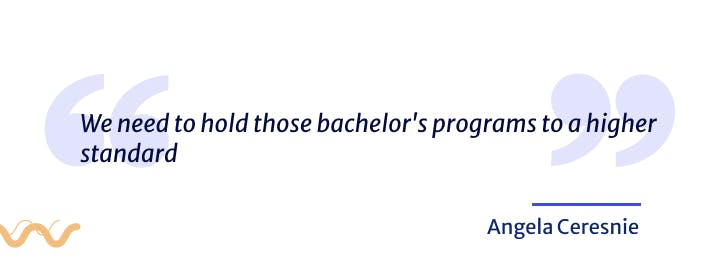
“As a CEO how do you think your leadership style has evolved over time?”
I would say, there’ve been like a few points in my career where I’ve realized that I needed to evolve my leadership style. I’d say the first one was after I took on the CEO role, for a period of time tried to be the CEO and the COO, which is not something I would recommend to anybody. A friend of mine works at Inc magazine and she wrote an article about this, where I talked about imposter syndrome. One of the things I talked about was how someone from my team came to me and said, “Angela, we all love you. You’re doing a great job, but you’re trying to do two jobs at once and that’s not going to work out.”
And so it became very clear that I needed to start not sweating the small stuff, getting un-involved in the day to day, kind of minor operations of the business and really focused on the things that I needed to be focused on as CEO. And I would say the theme for me has been consistently through my time as CEO needing to be reminded of that in some way, shape or form. And always that feedback that gets me to realize that it’s time for me to take that next step in my leadership style and how I’m approaching my job comes from someone that’s on my team.
One piece of advice I would give anyone who’s in any type of management role is to always ask and take feedback really well. In the end, particularly if you’re a CEO, because you don’t have a manager really around to give you feedback, but anywhere down the chain, the people who are going to know how to help you do your job, the best are the people who work for you.
If you create a safe space for them to come to you and say, you’re trying to do too many things, you need to make decisions quicker. You need to be more focused externally than internally. This is feedback I’ve received. If you get that feedback, and you take it, one you’ll empower your team, make them feel closer to you and more connected to you, but you’ll also be better at your job and what a great combination. I’d say my biggest piece of advice is that my leadership style has always evolved because I’ve had people on my team who are willing to push me.
We have a value at Climb, Succeed Together. I think that really sort of encapsulates that right, where we’re all in it together. Even when a company gets bigger and has more products and is doing more things, it’s still one company. I always try to instill in everyone that there isn’t a reality where one person is successful in the company and the other person isn’t. That success is a shared experience and something that we’re all gonna do together.
So if you’re not actualizing and performing at your best, somebody else telling you that and telling you how you can improve, is them really living up to that value. Because they know if you live up to your best then you will help the company succeed. And therefore we all succeed together.
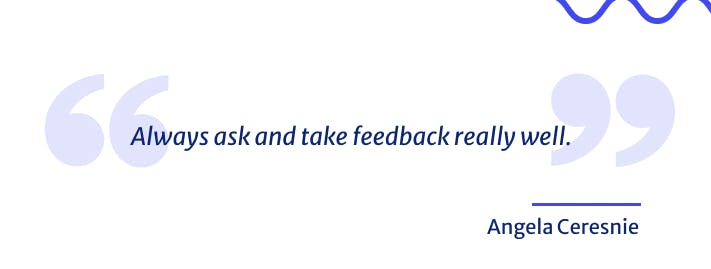
“How do you align these values to the mission of your organization and ensure consistency so that everyone really embraces them?”
Number one is incorporating some questions that are consistent amongst all interviews of new employees, around the values of the company. Some people might call it a culture interview, but we prefer to call it a values interview. Our view is that culture is something that should change and evolve. And if you only hire people that fit the culture, then the culture will be at a status, which is probably not a good thing.
A values interview is one where you can say, okay, we know the values that we all hold to be true about what we want to be doing as a business and how we want to be interacting with each other. What are the questions that we would want to ask about those values, where we can extract from an interview that somebody lives up to them.
The other thing is making sure that the values are woven into the day-to-day experience of, of employees. So an example of something that we do is we have in Slack, an integration with, this company, Lattice that we use as our performance management system, and Lattice has a feature where you can praise people.
So what happens on a fairly regular basis is all of a sudden in the general chat, a praise pops up and it is amazing how used that feature is amongst the whole company and how cross-functional it is. Right. So an engineer appraising a salesperson, an account manager, praising someone on the finance team. Every company is deeply cross-functional, but what we do in that is we have you have the person submitting the praise, select the value that the person exhibited. We make sure to talk about that. So I think like just instilling those little crumbs of the values into the day-to-day, experiences of employees is crucial to making sure that people remember what they are and see how they kind of come to life
I’ve noticed that as a company grows, what you can do in an all hands meeting starts to shift, and so being flexible. I think that’s a great example from you on how you were flexible in terms of the management of your company. Leadership is recognizing when a change needs to be made to how a company operates, even something as small as that. And then having the courage to make that change and live in your truth of this is how I think we’ll be better and executing
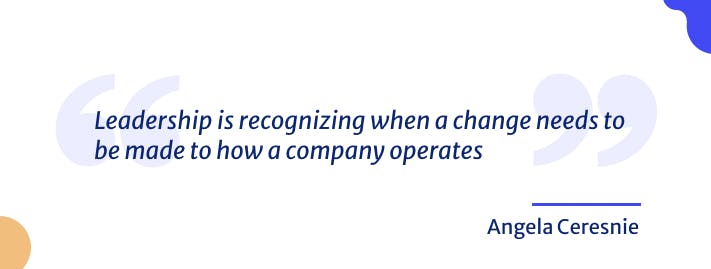
“As a CEO, how do you structure your product team to make sure that this is a tech company and not your traditional finance.”
First of all, we have great product managers, product leadership, and engineers and engineering leadership. Actually one of our product managers is a graduate of the product school. What we do again, it’s about being nimble.
Historically we had one product team that worked on everything. And over time we now have developed pods, where we have one pod of engineers and product managers that are focused just on the school experience. We have another, that’s focused just on the student experience and so on. And that’s been really important to creating that expertise around, for instance, on the school experience. Like what do schools really need? What features and products do they really need to be able to more seamlessly offer the financial services that we’ve produced and that we, that we offer to them. Having some specialization has been helpful in building a really thoughtful roadmap that meets the needs of all the constituents.
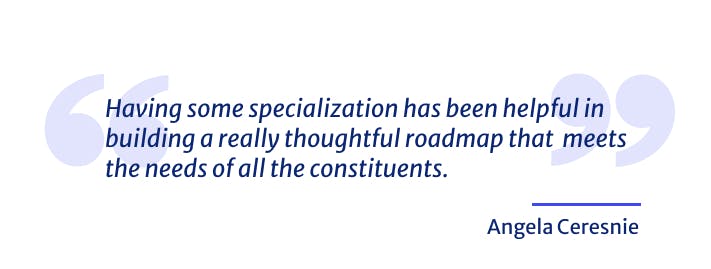
“The trend that I’ve seen in FinTech is that it doesn’t need to be complicated, you can make something beautiful that users love.”
One of the big FinTech learnings is you see a company like Square, and their products are beautiful. I think Square and a number of other companies have really upped the game in terms of what kind of user experience people should expect when they’re interacting with financial services companies and that having the best capital. The way you win is in part, by making it easy for people to understand the terms and conditions of the products you offer, especially if they’re financial products, and then to be able to convert. There’s nothing worse than seeing a pop-up that says you have to print something off and go find a fax machine.
In my years of working in financial services, I’ve run product experiences where a fax machine was required. And it was kind of cringe when you see that. But our technology has moved beyond that. And so I think the FinTech industry has really pushed the bar in terms of the kind of experience people should expect.
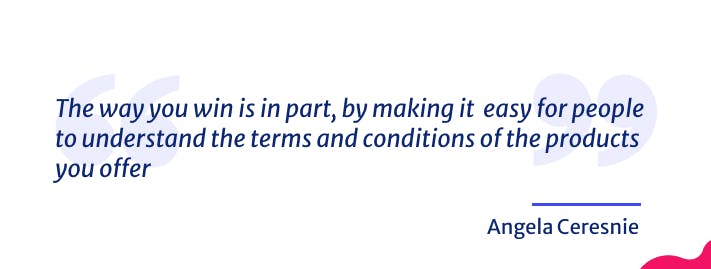
“How can someone learn more about your financial options and get the most out of your product?”
I would say, first of all, if you’re considering Product school or any other school, talk to the school directly. Whether it’s going to the website or calling an admissions director, definitely get on the phone with them and ask them about what their options are. And then if it’s a school that works with Climb, we have done a lot of work to make sure that the options that we offer are thoughtfully and well laid out for students who are interested. So please feel free to go to the client website, put your information in there. You can apply if a loan is what you’re looking for. You can apply for a loan and there’s no impact to your credit score until you actually enroll in the school so you can apply, see what rates and terms you get without any downside.
The last thing is we have an amazing team of student success representatives who work from nine to nine Eastern time and can answer any questions that you have via email chat phone. And have, I think probably the highest NPS rating of any customer service team that I’ve ever encountered.
“What is the best financial advice you’ve ever received?”
The best financial advice is, it’s all about diversification. Think about your life as a balance sheet. You have all of the money that you have and hopefully you have some, and then you have all of the obligations that you owe and on the asset side of your balance sheet, the money that you have.
A lot of people make the mistake when they’re just starting out, just starting to build a nest egg, to take all of the money they have and put it into the safest thing that they can because they’re worried about losing it. I know I was oriented that way and I know a lot of people are, but what I always recommend is take a small percentage of the money that you have, an amount that if you were to lose it, you would be okay and put it in something that’s a little riskier, right?
An example would be something like Bitcoin, maybe you have a friend who’s starting a company, you could give them a little money. Whatever it is, find areas where there’s potential upside, and put an amount of money, even if it’s a hundred dollars, $50, an amount of money you’re okay to lose as a percentage of your total savings there so that you can start to get used to seeing what it’s like to have a diversified investment portfolio.
That’s the best advice I got now. It doesn’t hurt that. I got that advice back in 2016 and I put a little money in Bitcoin. I do believe that there are those opportunities out there for people, and often people get worried because they don’t have a lot of money and think that those opportunities aren’t available to them.
Now with the internet and all these companies creating really interesting investment vehicles, there’s always interesting places. You can put even a little bit of money, to start getting some practice of having that diversified portfolio.

Join us again next week for more Product CEO insights! Same time, same place 😉
Listen to our episodes on your favorite platform
Stay tuned for new episodes
By sharing your email, you agree to our Privacy Policy and Terms of Service

